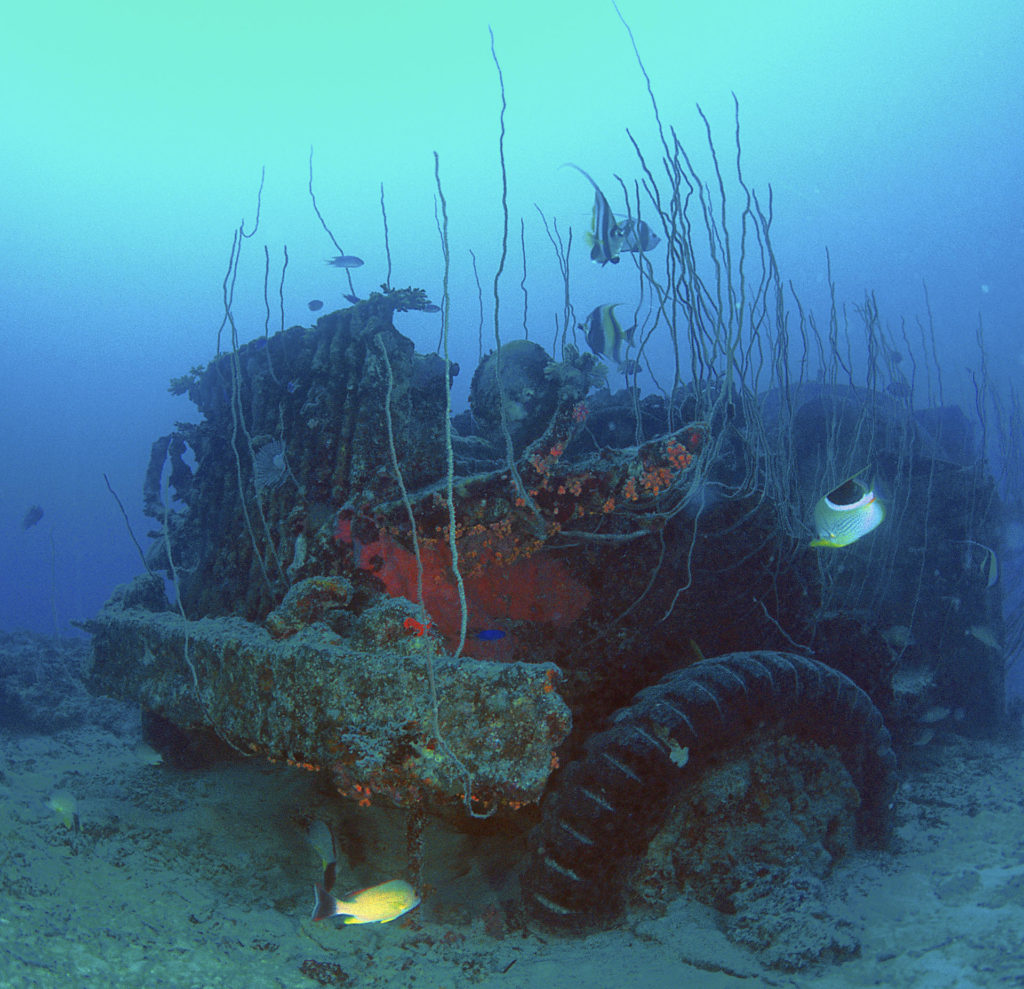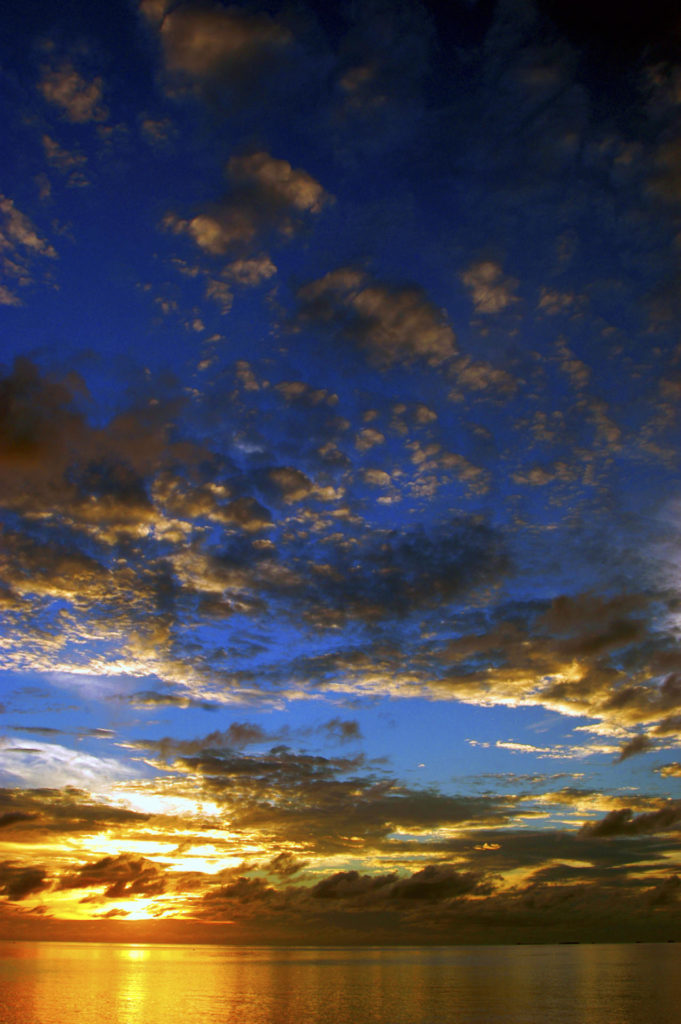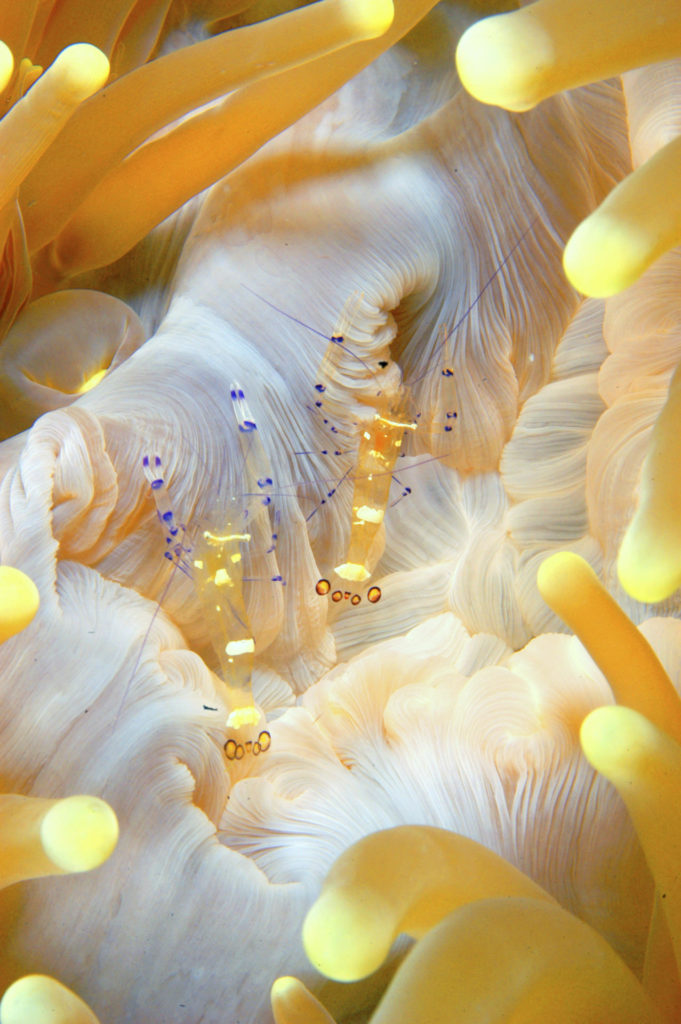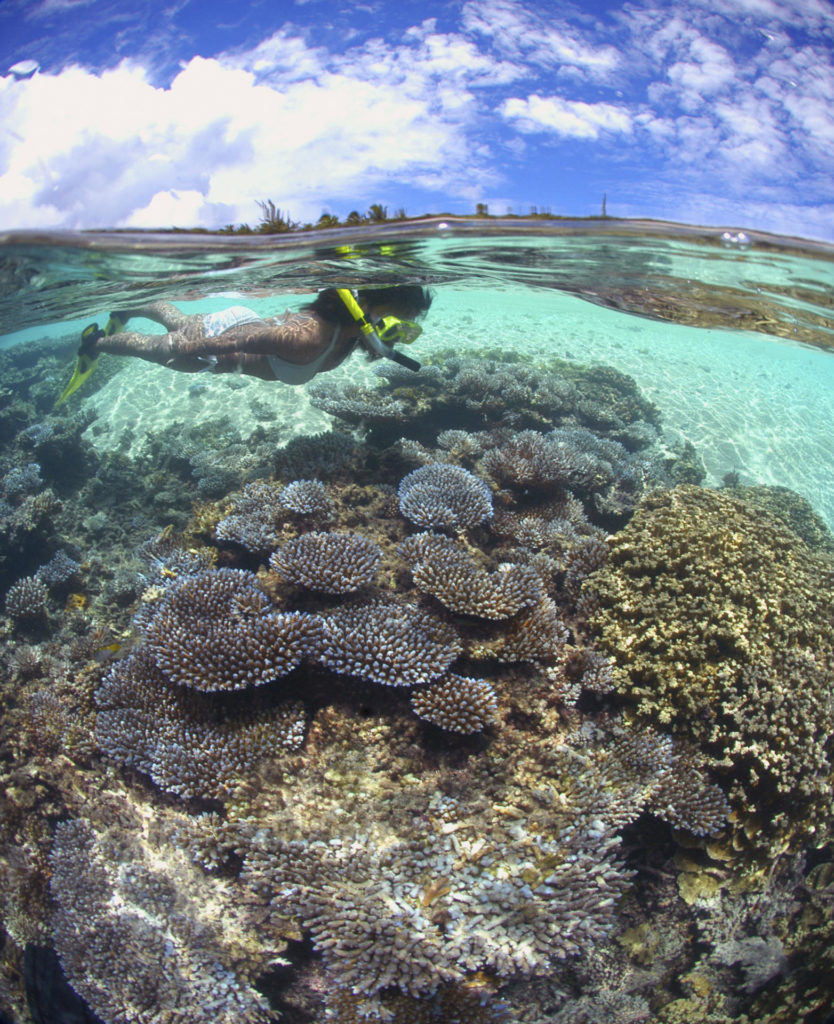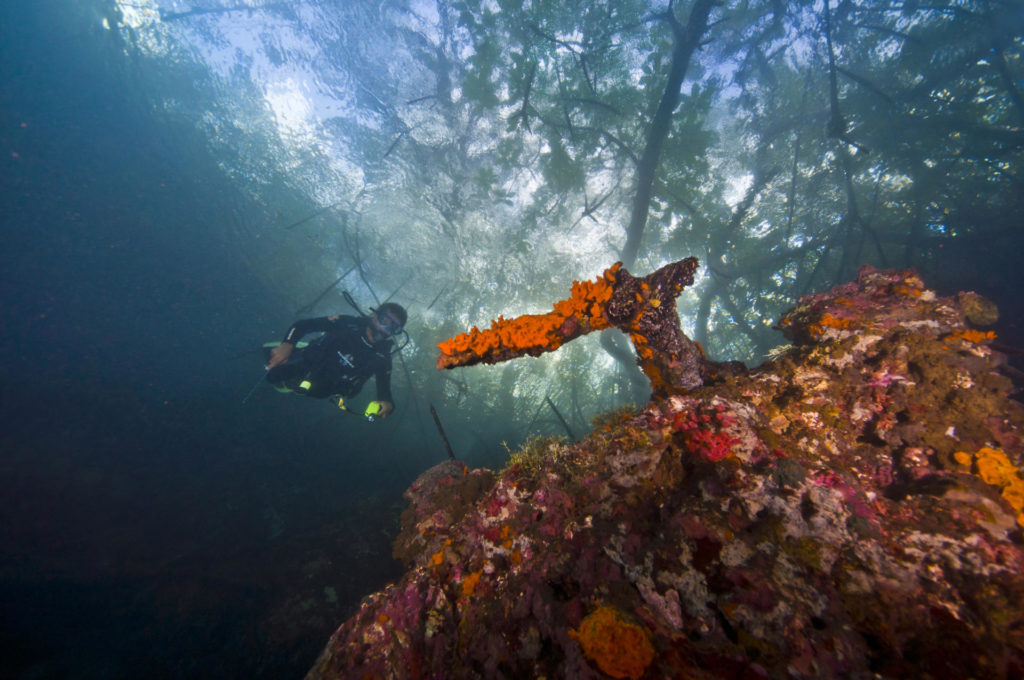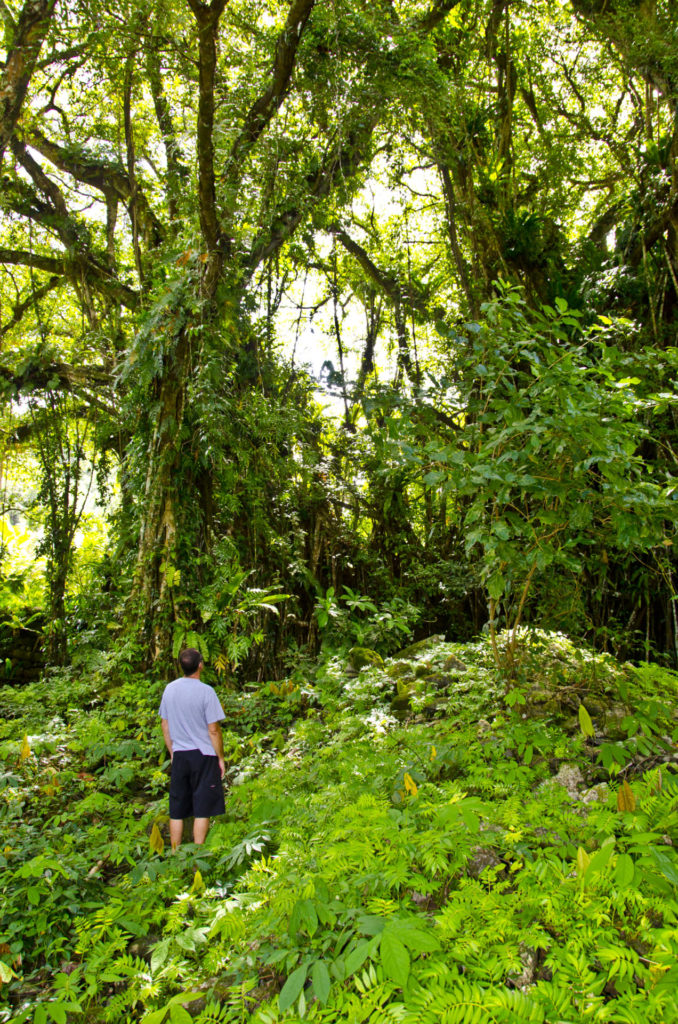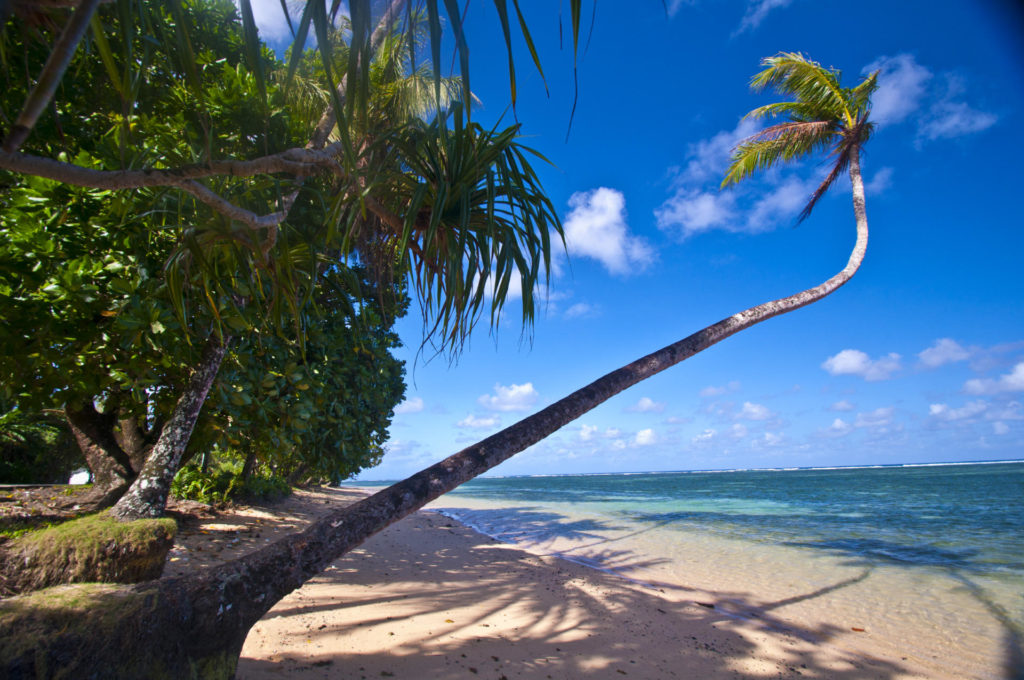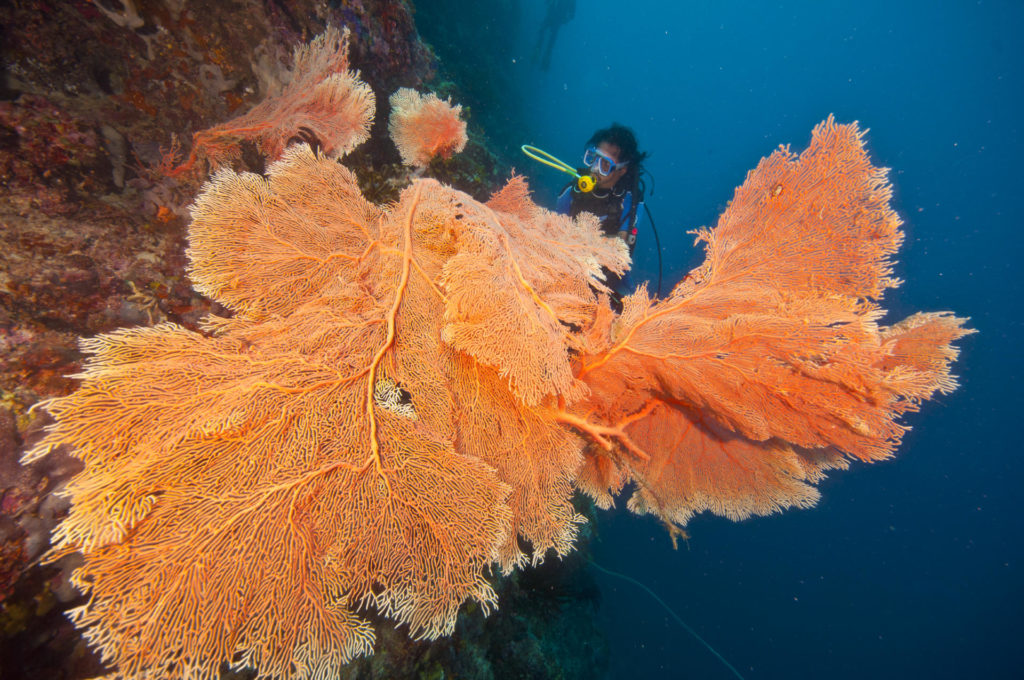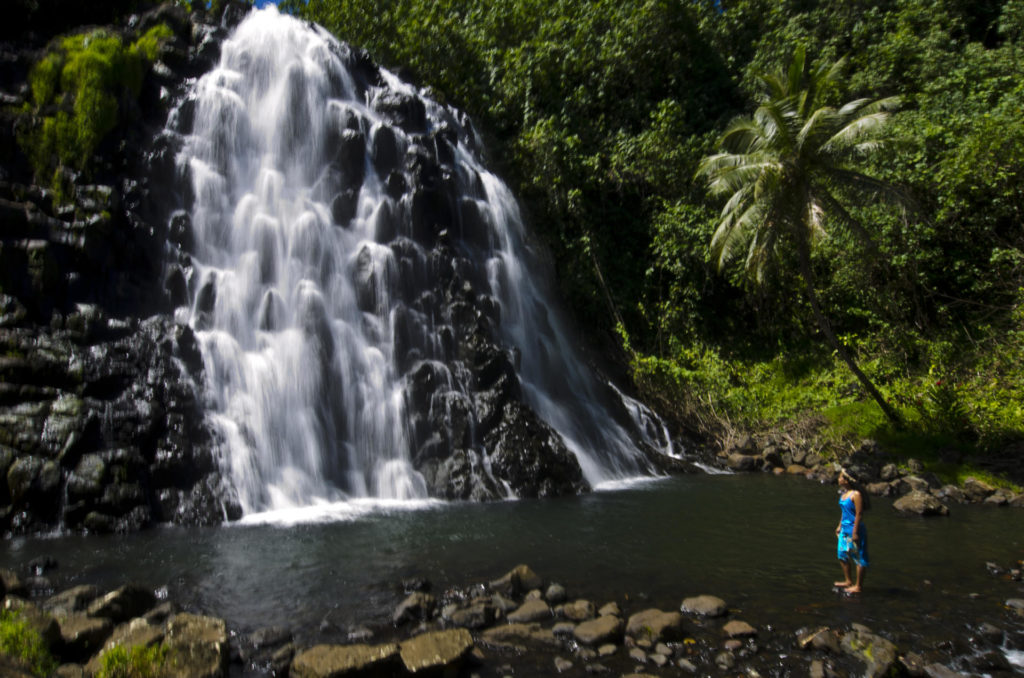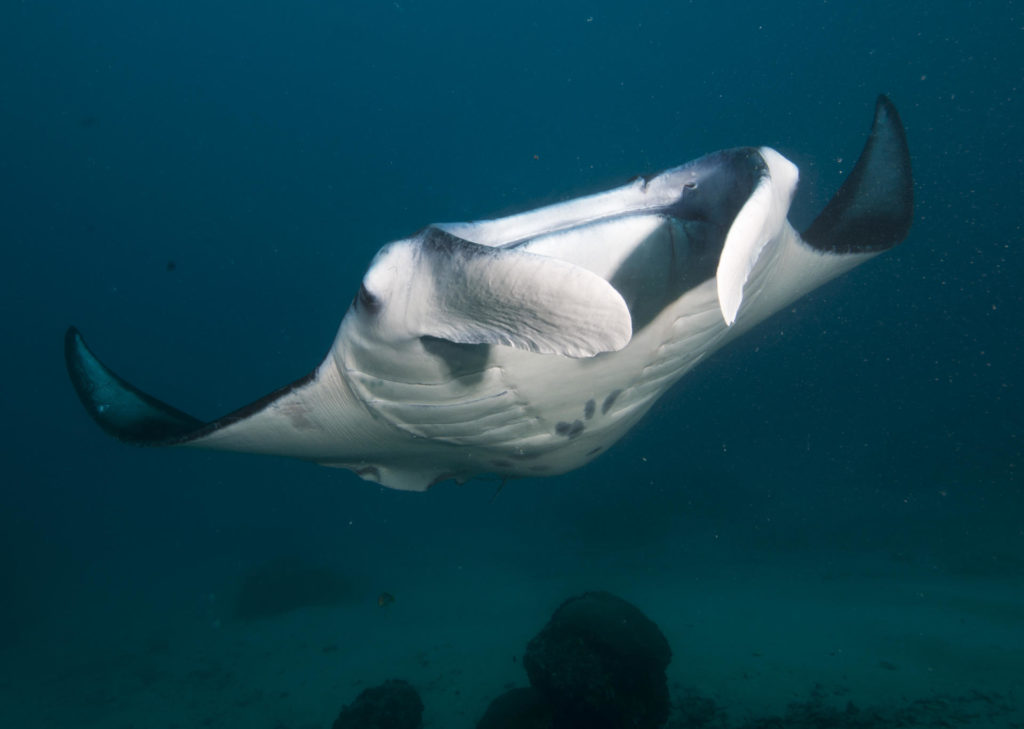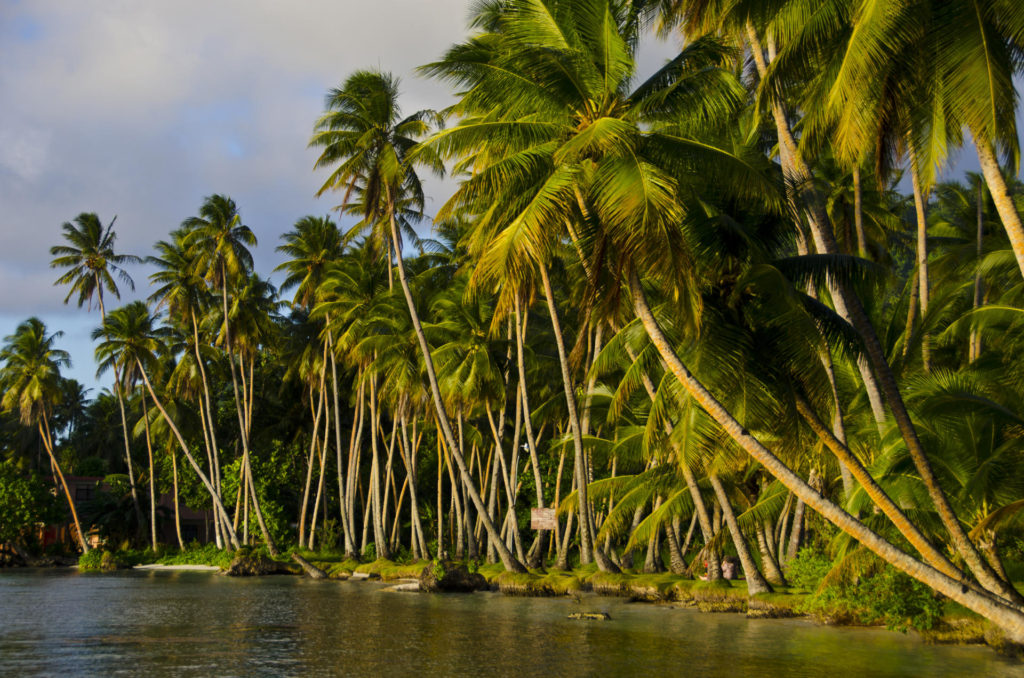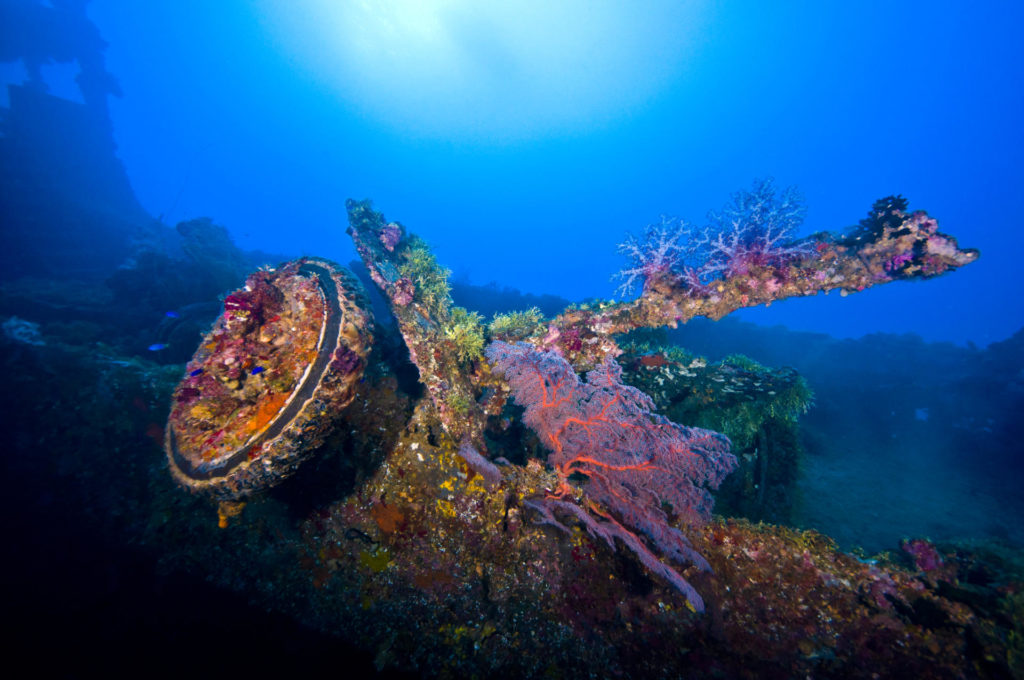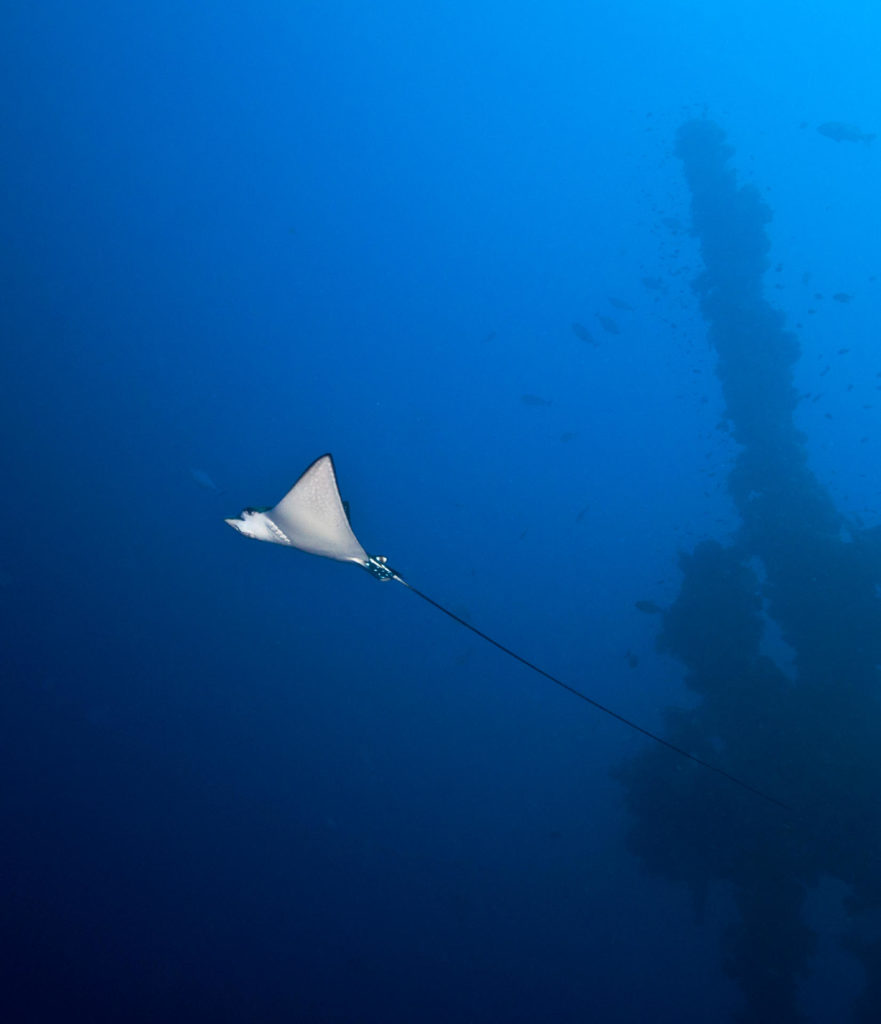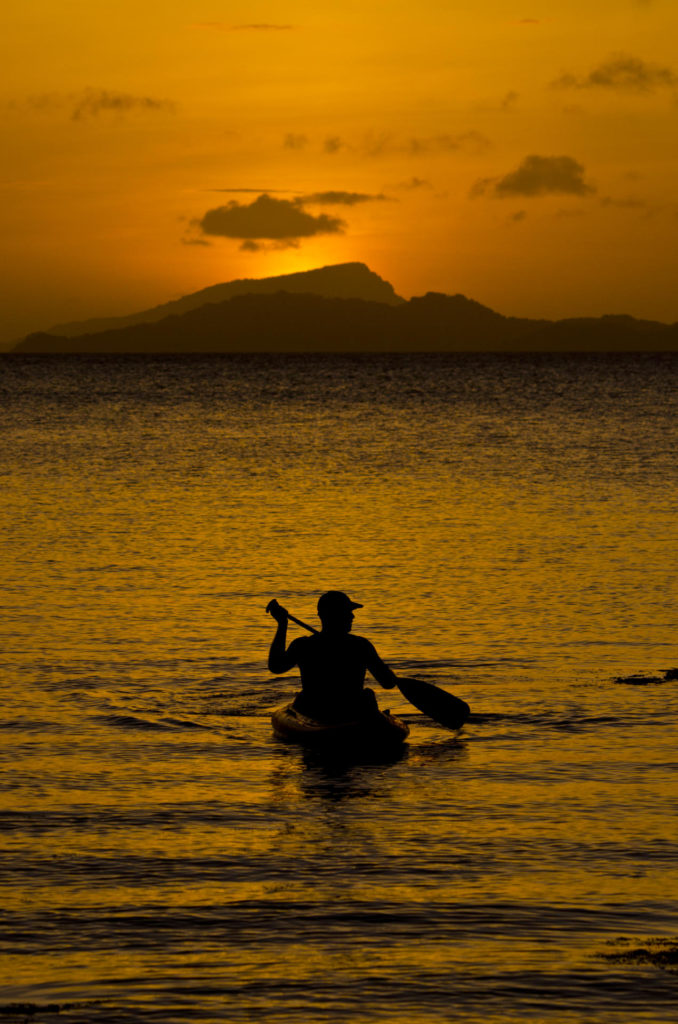The island nations scattered around the northwestern Pacific Ocean are collectively known as Micronesia. These “tiny islands” (the largest, Guam, is only 30 miles long) are spread out across an area equal to the size of the United States.
Part One: The Marshall Islands, Kosrae, Pohnpei and Chuuk
Here you will find some of the world’s best diving. There are war-era shipwrecks, spectacular underwater walls and drop-offs and beautiful coral reefs that delight snorkelers and divers alike.
Each island has its own special features, both culturally and geographically, making it a fascinating island-hopping experience.
There are roughly eight distinct cultures found among the islands. Some islands rise high out of the sea with great hikes, flowing waterfalls and jungle rivers. Low lying islands boast sandy beaches, huge stands of coconut palms and remote atolls.
From the Marshall Islands to east to the archipelago of the Palau Islands to far west, this is island-hopping at its best. You will discover things found nowhere else in the world, from lakes full of jellyfish to huge stone disks used for money.
The Marshall Islands
The Marshall Islands is one of four “atoll nations” in the world. These land masses, located in eastern Micronesia, about four hours by air from Hawaii, have infamous names such as Bikini and Rongelap, and they were the sites of 1950s nuclear testing.
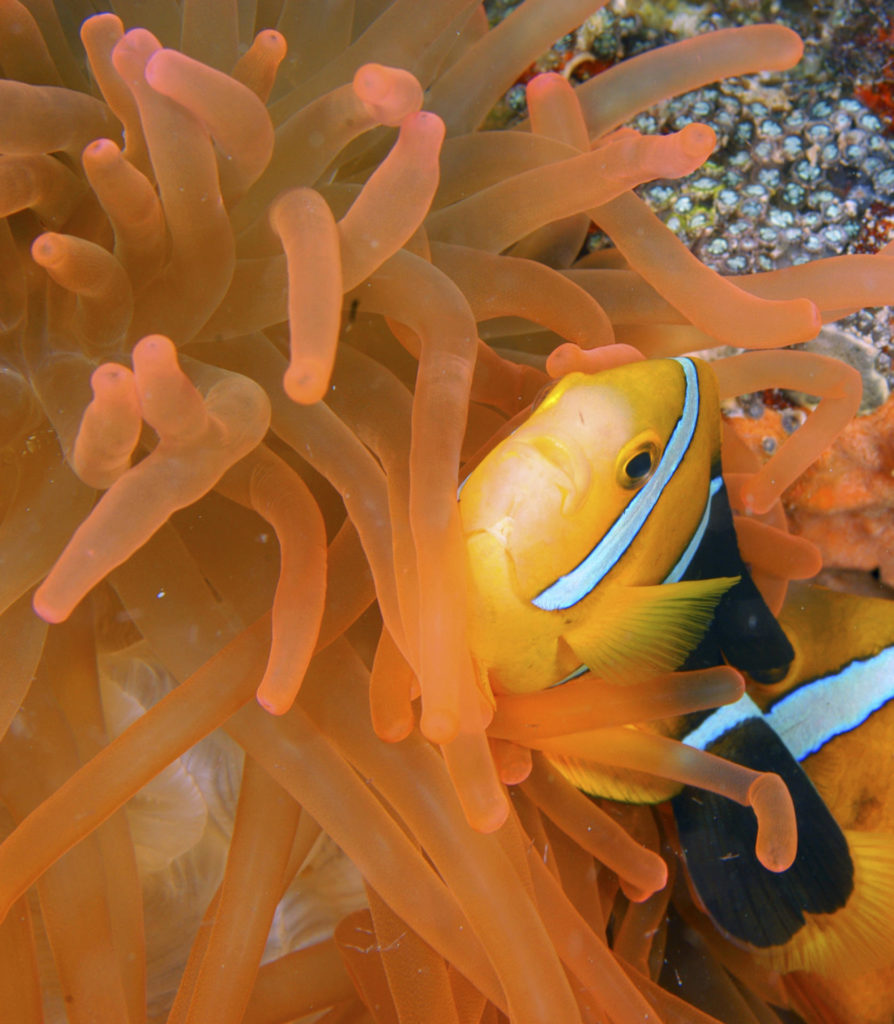
An endemic Marshallese clownfish in a flourescent sea anemone on the sea floor for divers to explore in the Majuro Lagoon. 
A WWII era US truck sits on the sea floor for divers to explore in the Majuro Lagoon. Sea Whips grow from the radiator. 
A Majuro Lagoon sunset. 
Rich and healthy coral growth inside the waters of the Majuro Lagoon include these commensal shrimp in the mouth of a sea anemone. 
A snorkeler enjoys the rich and healthy coral growth inside the waters of the Majuro Lagoon.
Kwajalein Atoll is still used today to test U.S. “Star Wars” missiles and other space defense programs. Jaluit was a hub of copra trading in the 1800s and of the Japanese in WWII.
Majuro is the capital of the Marshall Islands. Today it is a thriving center of business, hotels and eateries and the gateway to tourism and scuba diving in the Marshall Islands.
Modern Majuro is not so overbuilt that the visitor feels out of touch with nature. Buildings are modest, and the paved road runs from one end of the large main island to the other, through town and then out along beach-lined shores. It ends at a beach park with large shade trees and views of the azure lagoon.
Majuro Atoll and Arno, its nearby neighbor, are producing spectacular diving that reef buffs, wreck buffs and fish fans find addictive. If you love the sea, you’ll adore staying on an atoll. Every direction has ocean views, whether it is the inner lagoon or the Pacific Ocean.
Here, water is a fact of life. Wind keeps the coconut trees rustling, and the lapping of the waves on the shore adds to the symphony of island sounds.
For divers, the Holy Grail is one of the atoll’s major passes at incoming tide dubbed The Aquarium. When the tide is right, fish including many large pelagic fish, gather here in great numbers.
With an average water temperature a comfortable 83 degrees year-round and an air temperature about 80 degrees, Majuro has some of the most favorable diving conditions around. Water clarity is normally excellent at incoming tide and pretty good even at outgoing.
The Majuro people are gentle and friendly; almost shy. They are famous for woven baskets and fans. Visitors can enjoy sailing a handmade outrigger across the lagoon or taking a day-trip to one of the remote islands for a Robinson Crusoe adventure. There are hotels in town with nice beaches and also some private stays; some very upscale, on the lagoon islands.
Kosrae
Kosrae is one of the four states that make up the Federated States of Micronesia, a nation with five distinct ethnic groups. Unlike the rest of the FSM states, Kosrae has no landmasses or atolls other than the island itself.
Kosrae juts from the sea, exposing its ragged cliffs toward the clouds. It is a lush green island with some roads and development, but it is mainly jungle, rivers and mountains, and an amazing inland mangrove and hardwood forest.
This is a religious place, predominantly Catholic and Protestant, and work is not done on the Sabbath. Somehow, diving gets equated with fishing, so it is not OK to dive either. However, you can take an exhilarating (and strenuous) hike to the top of Mt. Finkol or a more relaxing hike to Sipyen Falls.
You’ll be tempted to spend the day lounging at this cooling 30-foot falls that ends in a refreshing tidal pool.
Kosrae’s ruins in Leluh aren’t as famous as Nan Madol in neighboring Pohnpei, but they have the same mysterious history. Leluh was the ancient ruling center of Kosrae back when it was a feudal society more than 500 years ago. The king and high chiefs lived inside Leluh’s massive walls, along with their servants, low chiefs and other commoners.
When Europeans first made contact (1824), Leluh had about 1,500 residents. The “city” contained more than 100 walled compounds and was as large as Nan Madol. Today, one can wander the remnants of this city and imagine life back in those days while marveling at the effort if must have taken to build.
Kosrae is a special place for sea kayaking. Paddle among mangroves as birds cry and flit overhead and water drips into the overgrown passages. Don’t miss a trip through the Utwe-Walung Marine Park. It is both eerie and wonderful with the towering overhead canopy of indigenous terminolia trees above. It is a relaxing adventure into nature.
Kosrae is famous for its eco-friendly mooring buoys that mark more than 40 scuba diving sites. This is one reason the coral always looks so good here. Underwater, the marine wonderland unfolds with huge bommies and a steep slope.
At Walung Dropoff, a large school of big-eyed jacks circles and flashes in the sun. Sea anemones and their respective clownfish are plentiful. Schools of brilliant anthias and basslets give a crimson glow to the drop-off edge, dancing in the current.
Pohnpei
Pohnpei is one of the most beautiful islands in Micronesia. Its high dragonback mountain range rises to the clouds and forms a tropical rain forest, creating more than 40 rivers and 20 waterfalls ranging from nice to spectacular. Some are easily accessible while others take considerable effort and a good guide to find.
The broad inner lagoon is pocked with reefs and blue holes and scribbled with channels both broad and deep. Outside the lagoon sit two post card-perfect atolls. Pohnpei is to the North Pacific what Bora Bora is to the South Pacific. Idyllic, lush and inviting.
You’ll fly in from the south, circumnavigating more than half of the island before heading toward mighty Sokehs Rock, the Diamond Head of the west, and touching down in Kolonia Town.
Pohnrakiet sits on a hill overlooking the harbor. The villagers here are of Polynesian descent, hailing from the outer Pohnpei atoll of Kapingamaringi. These folks are famous for their carvings made of mangrove wood and palm ivory and their weavings made from palm and panadanus. Toothed sharks, sea turtles and flowing mantas are all fashioned by the creative woodworkers in this village.
Divers usually head straight for Manta Road, Pohnpei’s introduction to the stellar manta sites of Micronesia. The resident family of mantas here includes some that are almost totally black. Divers gather near a cleaning station which has been designated a protected site to help preserve the manta behavior. They must keep their distance from the station, but the mantas still swim close by.
Nearby is Areu Wall, a great inner reef wall fed by currents. Here huge sea fans and soft corals thrive. But the most fun is exploring the deep cracks and crevices that have been cut into the wall over the centuries. Sponges, sea whips and lacey corals share the hideaways with billowy sea anemones and beautiful Notodoris nudibranchs.
Take the time to hike up to the top of Sokehs Ridge, where a panoramic view of the western coast awaits. Before you is Kolonia town, the scenic harbor and Palikir Pass, a name all big wave surfers will recognize. You can look upon the back of mighty Sokehs Rock, the island’s most impressive landmark, and down all of the reef passages.
Truk Lagoon
It’s a fairly short hop to Chuuk from Pohnpei. The plane enters the lagoon from the west, passing over the vast barrier reef that surrounds one of the largest and most scenic atolls in the world. The pilot sometimes gives the full tour, traveling past the peak of Tol, the lagoon’s highest island.
Then it is over historic Param, once a major air base during WWII. He then wings past Fefan, Eten, Tonoas and into Weno, the main center of the lagoon.
Chuuk (also known as Truk) is the famed shipwreck haven of Micronesia, and an aerial tour provides a great look at why the vast lagoon was such a great anchorage for Japan’s WWII fleet. More than 50 ships and planes now rest on the lagoon’s floor following the devastating attack in February 1944. Decades later, they are now “ship reefs.”
Divers come to Truk mainly for the wrecks. An excellent first dive is the Shinkoko Maru, perhaps the most beautiful wreck in Micronesia. It has many artifacts, soft coral and sea fans galore and great marine life. A squadron of eagle rays sometimes plays at the stern.
The beautifully overgrown stern gun may be overshadowed only by the coral-covered bridge. The ship’s compasses are still intact and the whole bridge is a kaleidoscope of color (this is a great night dive). This is also where the famous surgeon’s table sits in the infirmary. The Shinkoko’s bow and bow gun are things of beauty.
Japanese divers like to stay on remote Jeep Island in the south end of the lagoon. There are 16 coconut trees here and a small house with tatami mats. A Chuukese couple cooks for divers and snorkelers. All one hears is the wind and constant splashing of the waves on this tiny islet. Serenity reigns.
In the summer, pods of bottlenose dolphins come into the South Pass. Jeep residents go out and swim with the big dolphins. At night, the sky is filled with stars.
Shark Island near Weno is also a favorite. Undersea there is a shark cleaning station where small fish clean parasites from the sharks’ mouths. It’s like a trip to the dentist for these sharks. One by one, big gray reef sharks appear.
The wrasses go to work on their bodies, through their toothy maws and gills. Quickly moving their tails to hold in place, they get a short cleaning, circle and then do it again. To see this natural behavior is something special.
The area around Shark Island is also quite nice, and the dive can be finished with a quick tour of the reef. Reef diving in Truk is overshadowed by the fantastic shipwrecks. However, there is great promise in the reef and pass diving here, and you can occasionally even see dolphins swimming around the island’s edge.
PRACTICALITIES
Getting There: The Marshall Islands, Kosrae, Pohnpei and Chuuk are serviced by United’s Island Hopper that starts in Guam in the west and Hawaii in the east, stopping at every island twice weekly. There are additional flights from Guam to Chuuk and Pohnpei. If coming from Japan, take one of the many United flights to Guam via Osaka or Narita and then transfer to one of the island hoppers.
Web Connection
Marshall Islands: www.visitmarshallislands.com
Federated Sates of Micronesia (Kosrae, Pohnpei, Chuuk)





